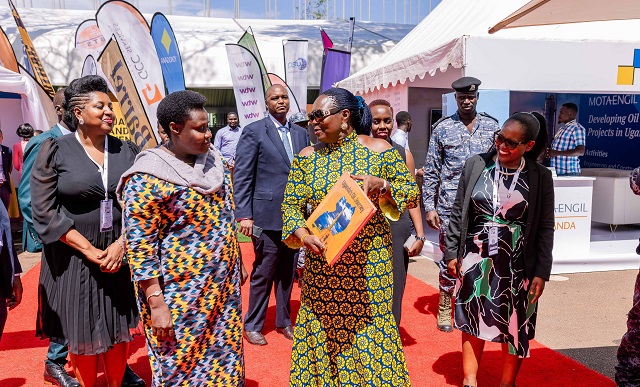
Following the confirmation of commercial oil and gas production in 2006, the government has enacted and updated various laws and policies to facilitate sustainable development
Kampala, Uganda | THE INDEPENDENT | Uganda’s ninth Oil and Gas Convention, which concluded on April.18 in Kampala, highlighted a promising future for the country’s energy sector, balancing fossil fuel development with renewable energy initiatives.
Over 600 delegates and 50 exhibitors gathered to discuss strategies under the theme “The Journey to First Oil in the Face of a Just Energy Transition.”
The convention emphasized the dual challenge of exploiting oil and gas resources while pursuing clean energy solutions.
“We are determined to strike a balance – achieving energy security for our people while pursuing clean energy solutions for the future,” said Ruth Nankabirwa, Minister of Energy and Mineral Development.
She underscored the government’s commitment to a responsible and sustainable energy transition, aligning with the global agenda at COP28 in Dubai, where Uganda presented its Energy Transition Plan aiming for universal access to clean energy by 2030.
Key takeaways from the convention included the importance of stakeholder collaborations, enhancing infrastructure like roads, and promoting joint ventures and technology innovations to spur growth. The attendees acknowledged significant progress in national content, with investments creating jobs and building local capacity, moving closer to the 40% target of Ugandan company participation.
Significant projects highlighted include the East African Crude Oil Pipeline coating plant in Tanzania and ongoing negotiations for a new refinery. The convention also celebrated the strides in upstream projects like Tilenga and Kingfisher, where development is advancing rapidly.
However, environmental sustainability was a central theme, with rigorous assessments and mitigation strategies ensuring that oil and gas development does not compromise Uganda’s ecological or social landscapes.
“Our development model prioritizes environmental conservation alongside economic growth,” Nankabirwa explained.
Initiatives in place for sustainable oil and gas production
Following the confirmation of commercial oil and gas production in 2006, the government has enacted and updated various laws and policies to facilitate sustainable development ahead of oil and gas production soon.
Joseph Kobusheshe, the Director of Environment, Health, Safety and Security at the Petroleum Authority of Uganda (PAU) earlier said that the government already carried out the Strategic Environmental Assessment (SEA) of the oil and gas activities in the Albertine Graben and works closely with the licensed oil companies and non-government partners to ensure protection of the environment, human health and safety during oil and gas activities.
He said the planned Tilenga and Kingfisher projects, which will produce an estimated 1.4 billion barrels of oil, together with the East African Crude Oil Pipeline (EACOP) that will help export some of the produced oil to international markets, were first subjected to a preliminary environmental and social screening process that informed the conceptual design of the projects.
“Subsequently, a rigorous risk/impact assessment process was undertaken in line with national environment laws and international best practices. This process provided the host communities and the public the opportunity to freely express their views. In addition to the comprehensive stakeholder consultations, public hearings were held for each of the three projects between 2018 and 2019,” he said.
Kobusheshe said the feedback from the consultation process further informed the design of the projects and informed the mitigation measures for the identified potential negative impacts and public concerns. The impact assessment for the Refinery project is ongoing.
He said the oil and gas projects are to be developed by applying state-of-the-art energy-efficient and environmentally friendly technologies that will include multiple drilling of up to 15 wells from a single well pad and sharing of facilities to minimise the environmental footprint.
“The crude oil pipelines will be buried and equipped with leak detectors and valves to automatically shut down the pipeline in case of damage or abnormalities,” Kobusheshe said, adding that water recycling will greatly reduce the amount of freshwater abstraction by over 90% and avoid the huge volumes of wastewater requiring treatment and discharge into the environment.
He said no flaring or venting of oil or gas will be permitted during normal operations. “Overall, the projects fall within the category of ‘low emission,” he said.
 The Independent Uganda: You get the Truth we Pay the Price
The Independent Uganda: You get the Truth we Pay the Price


